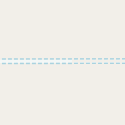Tag:tunnel=culvert
 |
| Description |
|---|
| For a stream/drain/ditch/river passing under a road. Use it on the section of waterway passing under the road. |
| Rendering in OSM Carto |

|
| Group: waterways |
| Used on these elements |
| Useful combination |
| Status: de facto |
| Tools for this tag |
A culvert is a device used to channel water. It may be used to allow water to pass underneath a road, railway, or embankment for example. Culverts can be made of many different materials; steel, polyvinyl chloride (PVC) and concrete are the most common. Formerly, construction of stone culverts was common.
Typical culvert is a pipe buried under the road. Very large culverts may be hard to distinguish from bridges. Bridges will have deep foundation, and have a distinguishable superstructure (deck, girders) and substructure (abutments, pier, pile cap). Conversely culverts are buried structures and rely on the combination of internal capacity and the surrounding soil to carry vertical load. If the opening underneath is longer than wider it usually is a culvert.
Culverts commonly carry waterway=stream, waterway=drain, and waterway=ditch, but there are also large culverts carrying waterway=river.
-
Small culvert in dry/intermittently filled ditch
-
Another typical culvert
-
Box culvert in the Monterosso river
-
Culvert large enough to contain river rather than drain or stream
How to map
Tag the section of covered waterway, including layer=* as usual for tunnels.
Common values are culvert=pipe if the culvert is made of a single pipe or individual pipe sections and culvert=box if the culvert is rectangular shaped.
culvert=inverted_siphon may be added for sections of a waterway diving under another waterway.
See tunnel=* for a description of the preferred way of connecting culvert waterways to adjoining waterway sections.
Values
Additionally, the following values are in use with waterways:
Possible tagging mistakes
See also
tunnel=floodedmay be used to map larger and longer tunnels used to channelise any fluid.- Culvert on Wikipedia
- Water feature#Navigations
- The discussion page for details of an earlier OSM tagging system, culvert=yes.
man_made=pipeline- Proposal:Culvert type



